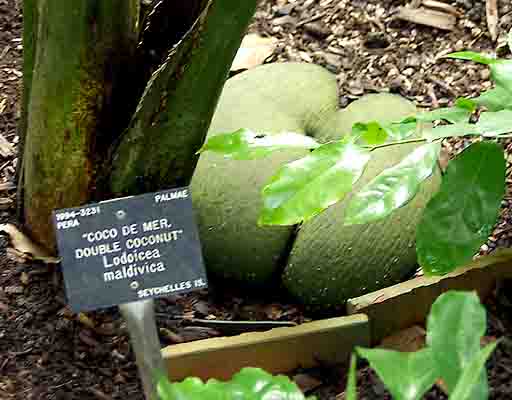Seychelles remains the only country where you can find the world’s largest seed. The seed, the Lodoicea Maldivica, is also known as sea coconut, coco de mer and double coconut.
The seed is only one of six genera of palms endemic to Seychelles.
These large seeds may weigh up to 50 pounds and have historically been found floating in the Indian Ocean, being known to explorers long before the parent plants were discovered.
They were originally named only from floating seeds; erroneously thought to have originated from the Maldive Islands, they were assigned the scientific name “maldivica“.
The L. maldivica is dioecious, which means that male and female reproductive organs are borne on separate plants. Unless DNA sampling is employed, one cannot tell whether a young plant is male or female until it reaches reproductive age.

In days of old, it was rarely found washed ashore on the coast of India and viewed as the female counterpart to the Sankara Stones on Hindu altars. It was also used as a medicine and as an aphrodisiac.
Lodoicea is classified within the subfamily Coryphoideae of the Arecaceae (the Palm family). It is also the heaviest in the plant kingdom.

The first mention of the seed was in the annual report for the year 1875, where James Murton lists it as one of the plants cultivated in Seychelles.
Today, the seed is so valuable and coveted by so many that its chances of being allowed to fall into water and drift away have to be extremely small.


:max_bytes(150000):strip_icc()/GettyImages-533766924-5a2b0d5bc7822d0037233626.jpg)













